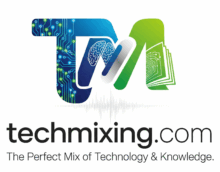Feature Differences Among SQL Server Versions
Below is a comparison of key features introduced or enhanced in SQL Server 2016, SQL Server 2017, SQL Server 2019, and SQL Server 2022:
SQL Server 2016
Release Date: June 1, 2016
- Key Features:
- Always Encrypted: Enhances data security by encrypting sensitive data at the client-side.
- Row-Level Security (RLS): Restricts access to specific rows based on user roles.
- Dynamic Data Masking (DDM): Masks sensitive data for non-privileged users.
- Query Store: Stores query execution history for performance troubleshooting.
- Temporal Tables: Tracks changes over time in tables for historical data analysis.
- PolyBase: Enables querying of Hadoop or Azure Blob Storage data directly from T-SQL.
- JSON Support: Allows parsing and formatting of JSON data.
- Stretch Database: Moves cold data to Azure automatically for cost-efficient storage.
- Performance Improvements:
- In-Memory OLTP enhancements.
- Enhanced Columnstore Index performance.
SQL Server 2017
Release Date: October 2, 2017
- Key Features:
- Cross-Platform Support: Introduced Linux compatibility, making SQL Server available on Windows and Linux.
- Graph Database: Enables modeling of many-to-many relationships using graph nodes and edges.
- Python Integration: Supports Python scripts for machine learning and analytics.
- Resumable Online Index Rebuild: Allows pausing and resuming index rebuilds.
- Automatic Database Tuning: Provides performance tuning recommendations and automates fixes.
- Performance Enhancements:
- Adaptive Query Processing (AQPs): Improves query performance dynamically.
- Batch Mode Adaptive Joins: Enhances execution plans for large datasets.
SQL Server 2019
Release Date: November 4, 2019
- Key Features:
- Big Data Clusters: Integrates SQL Server with Apache Spark and Hadoop Distributed File System (HDFS).
- Intelligent Query Processing (IQP): Includes features like batch mode on rowstore, memory grant feedback, and scalar UDF inlining.
- Java Integration: Enables execution of Java code from within SQL Server.
- Data Virtualization: Query external data sources such as Oracle, MongoDB, or other SQL Servers without moving data.
- UTF-8 Support: Provides native support for UTF-8 encoding.
- Security Enhancements:
- Always Encrypted with Secure Enclaves: Extends Always Encrypted to support more operations.
- Transparent Data Encryption (TDE): Enhanced for better performance.
- PolyBase Enhancements:
- Supports querying more data sources like Oracle, Teradata, MongoDB, and others.
SQL Server 2022
Release Date: November 16, 2022
- Key Features:
- Cloud Integration:
- Azure Synapse Link: Real-time data synchronization between SQL Server and Azure Synapse Analytics.
- Azure Purview Integration: Improves data governance by cataloging on-premises data.
- Intelligent Performance:
- Query Store enhancements for better query tuning.
- Parameter Sensitive Plan Optimization: Addresses performance issues with parameter sniffing.
- Ledger: Provides tamper-evidence to ensure data integrity.
- Built-in Data Analytics: Integrates analytics with minimal performance overhead.
- TempDB Metadata Optimization: Reduces contention in highly concurrent workloads.
- Cloud Integration:
- Security Enhancements:
- Integrated Microsoft Defender for improved security monitoring.
- Simplified TDE Management: Enhancements for ease of Transparent Data Encryption configuration.
- Performance Enhancements:
- Continued improvements in Adaptive Query Processing and Intelligent Query Processing.
Feature Summary Table
| Feature | SQL Server 2016 | SQL Server 2017 | SQL Server 2019 | SQL Server 2022 |
|---|---|---|---|---|
| Always Encrypted | ✅ | ✅ | ✅ | ✅ |
| Row-Level Security (RLS) | ✅ | ✅ | ✅ | ✅ |
| JSON Support | ✅ | ✅ | ✅ | ✅ |
| PolyBase | ✅ | Enhanced | Enhanced | Azure Synapse Link |
| Cross-Platform (Linux) | ❌ | ✅ | ✅ | ✅ |
| Big Data Clusters | ❌ | ❌ | ✅ | ✅ |
| Graph Database | ❌ | ✅ | ✅ | ✅ |
| UTF-8 Support | ❌ | ❌ | ✅ | ✅ |
| Azure Integration | Limited | Limited | Limited | Extensive |
| Query Store | ✅ | ✅ | Enhanced | Enhanced |
| Intelligent Query Processing | ❌ | ✅ | ✅ | Enhanced |
| Secure Enclaves | ❌ | ❌ | ✅ | ✅ |
| Ledger | ❌ | ❌ | ❌ | ✅ |
Choosing the Right Version
- SQL Server 2016: Best for organizations focused on security and performance improvements without big data needs.
- SQL Server 2017: Ideal for organizations requiring cross-platform support or advanced analytics with Python.
- SQL Server 2019: Suitable for businesses looking to integrate big data and machine learning features.
- SQL Server 2022: The best choice for enterprises seeking seamless integration with Azure and the latest security and performance features.
Discover more from Technology with Vivek Johari
Subscribe to get the latest posts sent to your email.


